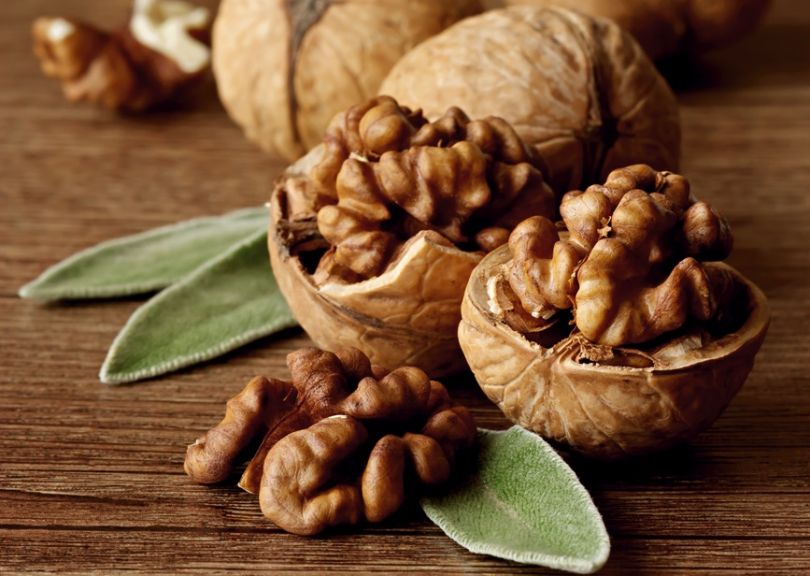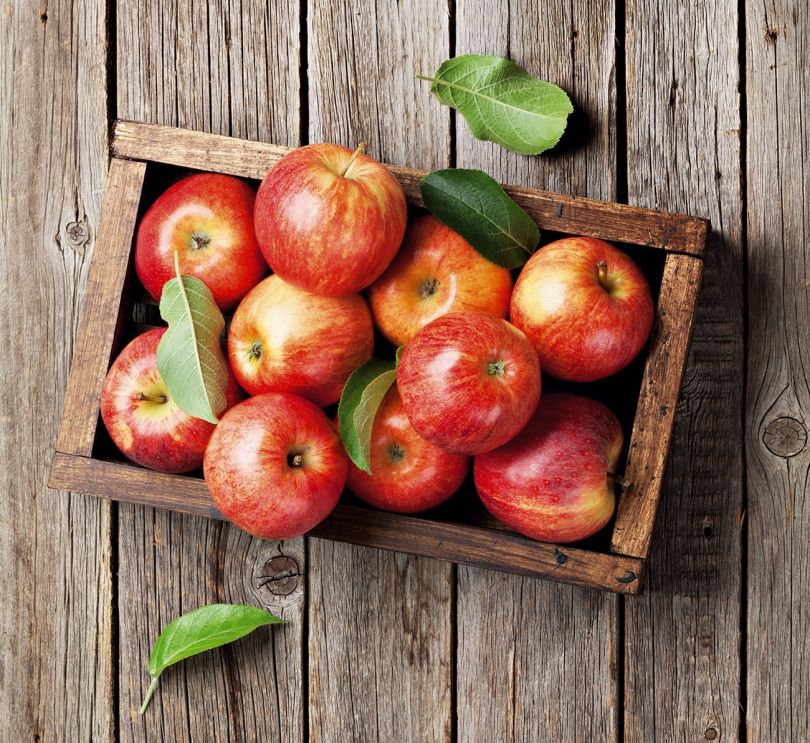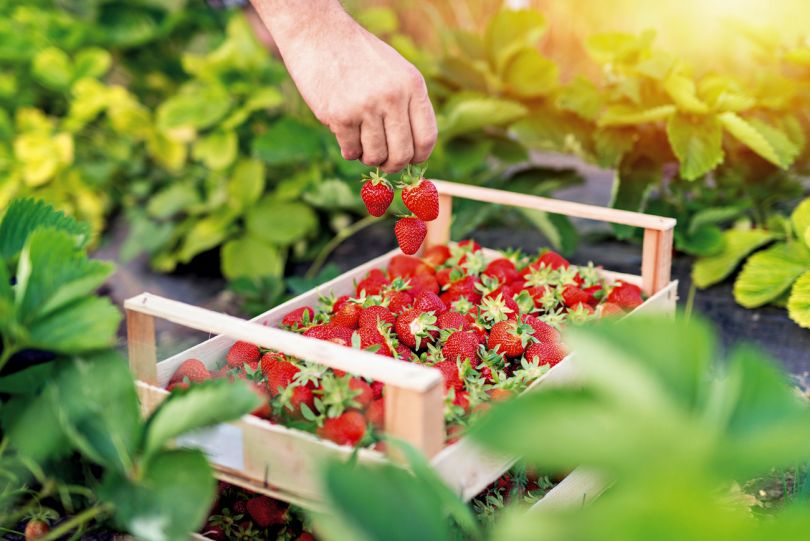Golden walnut
Walnuts account for more than a half of exported produce of the Ukraine’s orchards, in particular 51.3%. According to the Ukrainian Nut Association, last year walnut export reached $117 mln, which is 16% more than a year before. At the time, items delivered for export under Foreign economic activity code 0802, amounted $101 mln while a year earlier it totaled $79 mln, even though the walnut plantations cover 13.5 thousand hectares out of 200 thousand hectares of fruit perennial orchards as of 2017 (latest data have not yet been provided by the State Statistics Service of Ukraine – Editor).
Walnut glut has come up in Ukraine several years ago, after the walnut fruits had meaningfully grown in price on at global markets. That owed much to seedlings producers, who took up selling the conference public on walnuts to be a real goldmine.
Outcomes often did not meet expectations. Difference in kind of walnuts, even within a small retail batch, failure to grade the produce, picked at 95% on small household plots and in wood lines, result in low sales price. While the average world price on walnuts in shell made up $3.7 per kilo in 2017, the produce originated from Ukraine was traded at nothing else but …97 cents.
Despite all that, the walnut industry keeps developing. As reported by the State Statistics Service of Ukraine, 1844 hectares of walnut orchards were set out in 2017. By estimates of Gennady Yudin, Ukrainian Nut Association Vice-President, in 2018 walnut plantations covered the area of 2500-2800 hectares; and as much as 1820 hectares of that area were planted out with following compensation of costs from the state budget. No ordinary walnut trees were used for large-scale commercial plantations, but special-quality young plants to cover dozens and hundreds hectares. Important that commercial orchards owners involve additional equipment to do post-harvesting operations, like grading and shelling.
This way, Ukraine deliver less walnut kernels and more unshelled walnut for export. Gennady Yudin emphasized that 13 thousand tons of the walnut kernels were exported in 2016 while in 2017 they totaled 4.7 thousand tons and 2123 tons for only 9 months of the year 2018. In the meantime, the export of the unshelled produce as of 10 months of 2018 increased by 77% – up $77.3 mln as compared to the same period a year earlier. That allowed Ukraine to be one of the world’s three largest walnut exporters.
To be honest, it is sold for half its worth on the global market: $3.7 per kilo, at the average of $7.7 per kilo. Still it seems to be a step forward comparing it with a bit more than one quarter of the average world price, the Ukrainian walnuts used to be sold for. The fact that varietal certification process started lets us hope the exported Ukrainian walnuts would get better price. By now, the quality and varietal certificates have been issued for the walnuts produced by the service cooperative called “Ghorikhy Prychornomoriya” (Walnuts of the Black Sea region), operating 150 hectares of mixed walnut and hazelnut tree plantations. Outcomes of the intensified walnut growing are well observed now. Let us say that Ukraine has been scored 6th by volume of the walnut supplied to Japan, known for its consumers which are among the most demanding ones worldwide in terms of food quality.
Apple Prospects
All the same Ukraine’s orchard industry is all about apples. Apple trees account for half an area under orchards in Ukraine, i.e. 103 thousand out of 200 thousand hectares in 2017. Accordingly, in Ukraine apples were only fruits grown in volumes exceeding 1 mln tons. The market challenger – plum’s gross output is five time less than the apple has.
But this year the apple growing has been in crisis. Mostly, the overproduction crisis is discussed; this year output yield is estimated at 1.1-1.3 mln tons. As result, the price of apples dropped to 1 hryvna per kilo while even the price of 3-4 hryvna per kilo had been regarded as low last year. However, crisis in the industry has continued since 2014, when Russia, where a greater part of apples had been exported, embargoed the Ukrainian horticultural products. In 2014 the Ukraine’s apple fruits export totaled $5.38 mln where countries other than Russia accounted for only $200 thousand. Even attempts to bypass the embargo via Belarus did not save the day: though the apple export to Belarus increased in 2015 from $116 thousand to $827 thousand, the total amount decreased to $1125 thousand.
Refocusing on other regional markets would be a reasonable solution. New partnerships required time and efforts to be set up. Only a handful of people in Ukraine were capable of meeting this challenge, like Farm Enterprise “Gadz”, operating orchards on 600 hectares and storage facilities with controlled atmosphere for 6500 tons and a screening plant; it managed to set up export business in Sweden and in a while, in some other countries of Europe, Middle East and South-Eastern Asia.
A set of latent issues have been disclosed thanks to refocusing efforts. First off, inability to ensure steady supply throughout season. Until recently excessive amounts of apples fruits have been observed on the Ukrainian market annually throughout harvesting season and shortly after it ended, with their shortage in spring; then, the apples were brought in Ukraine from Poland and even The Netherland. Quality is a second issue. According to Taras Melnik, Farm Enterprise “Gadz” Director for Horticulture, the European market requires more than just a batch of the same grade and size, prescribed is even the minimum percentage of red color shade on the apple surface (say 70%). Third issue concerns choices and preferences with respect to varieties, which dramatically differ in European consumers as compared to Ukrainian and Russian customers, who had been in the focus of apple producers until a few years ago. This is why Andriy Yarmak, FAO (UN Food and Agriculture Organization - editor) Expert, highlights the need for a change in varietal structure of orchards; as well as for producers co-operation to form large homogenous lots, to grade and package products, to participate in trade fairs and to develop partnership with wholesale distributors.
We have now seen some initial outcomes. In 2017 revenues from the apple fruits export did better than in time of unrestricted trade with Russia, running to $6.9 mln. Record-breaking achievements have been refreshed in the current season. In November the maximum monthly amount of export ever observed was stated – i.e. 8 thousand tons.
Apple producers have not stopped at this point. First contracts and first deliveries to Singapore, Indonesia and Malaysia followed the trade mission held in that region by FAO for Ukrainian horticultural producers. The next will be a mission to the Persian Gulf region in late March. Now, the whole matter depends on products of appropriate quality. Given that in December, Ukrainian growers were not capable of meeting all requests from South-Eastern Asia due to the lack of products of the relevant quality in required amounts.
Glut of berry fruits
Export of berry fruits, specially, frozen berries supplies is one more success story in the Ukrainian orchard industry. In May 2013 participants of the Ukraine’s Berries conference noted the large amounts of frozen strawberries imported to Ukraine and did not see reasons for this trend to change. In first 11 months of 2018 Ukraine exported frozen berries to China for $2 mln, which is 11 times more than the export figures in the same period of 2016. In truth, mostly blueberry and bilberry were supplied, not strawberry or raspberry. But that very fact is telling! Roughly, for the first time ever the export of frozen berries harvested in 2018 is expected to run beyond 50 thousand tons, as assumes Fedir Rybalko, the Director of Ukrainian Horticultural Association.
Depreciation of national currency has made for more friendly prices on labor force and berry fruits in Ukraine. By meeting the challenge of the short storage period, large freezing facilities, easily adjustable from vegetables to fruits or berries, which has been put into operation several years ago, enhance the export capacity of Ukrainian berry growers. So, in 2017 Ukraine managed to export frozen fruits and berries for a total amount of $61 mln, with the fresh berries totaling at all $11 mln only. This year Fedir Rybalko expects the export of fresh and frozen berries altogether to reach $100 mln. That’s now turn of Ukraine to lay plans in respect of China, which in 2013 was thought being about to undermine the global market with its frozen strawberry. In all these years the amount of frozen fruits and berries from China decreased alongside the growing import, which has now passed over the export figures: $225 mln against $197 mln currently.
However, as FAO expert Andriy Yarmak reminds, berries as well as a range of fruits are most paying when supplied fresh, and not processed. Just in fresh berries export Ukraine has achieved most impressive results. As far back as 2014 it run to only $1.15 mln, (that is, it has grown 10 times for 2014-2017), and almost a half amount was sold to Russia. Since the embargo had been imposed by Russia on Ukrainian berries, their supplies to Belarus has increased from several dozens to over $2 mln, this being yet one fifth of the whole export amount. Now, Belarus has been left behind by The Netherlands ($4,1 mln) and Great Britain ($2,7 mln), comparing with 2014 when both had not yet imported berries from Ukraine.
Considering the growing demand for blueberries in Western Europe, it accounts for major part of fresh berries supplies from Ukraine. European customers have special interest in berries picked by-hand. This causes the blueberry glut in Ukraine: by area covered, blueberry is among top four berry crops in Ukraine, along with strawberry, raspberry and currant.
Yet the blueberry cultivation in Ukraine means extensive areas planted with it (10 hectares at least), and managed by serious business people, knowing quite well about marketing operations and those who would buy their products. Importantly that the blueberry is a champion for its storability. Export of other berry fruits may develop but on the basis of cooperation. Without it neither lots relevant to importer’s interests, nor product chilling right after harvesting would be arranged. If lots of high quality products are made available, they may be exported, say, to Persian Gulf countries, and not only Europe, namely, by air since there are many flights to get to Dubai from Ukraine.
Kyrylo Pavliv
Photos: shutterstock








